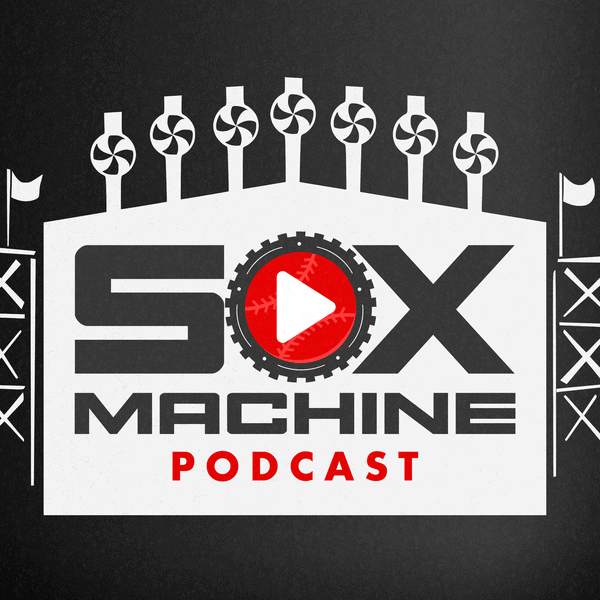With the World Series heading back to Houston and the offseason delayed for two more days, I have a chance to catch up on a couple of stories that floated by during my absence, but could resurface with a fury. Let's enter them into the record.
A few days before the Kannapolis baseball club announced its new team name -- goodbye Intimidators, hello Cannon Ballers -- Baseball America reported that Major League Baseball has proposed reducing the number of MLB teams from 160 to 120 in 2021.
These stories are related. The Kannapolis club changed its team name because it's already entering a new era by changing venues, moving to a new downtown stadium that is set to open next April. When the new ballpark opens, the White Sox will be 4-for-4 in their full-season affiliates having desirable modern facilities. Factor in the beneficial geographic proximity, and the White Sox should be fairly well insulated from any potential upheaval in the structure of Minor League Baseball.
Those happen to be two of the most contentious issues between Major League Baseball and Minor League Baseball as they work on a new Professional Baseball Agreement, which expires at the end of the 2020 season.
There's a lot to digest, but Major League Baseball sounds like it has three goals with negotiating the new PBA -- ending the game of musical chairs with substandard facilities, reducing travel and offloading responsibility for developing organizational players, especially if other clubs are going to follow the Toronto Blue Jays in paying their prospects more.
The first two points are valid, and it's probably worth revisiting the structure of leagues every generation or so as populations and fan bases change. Why is Nashville in the Pacific Coast League when it's a 2½-hour drive from a team it never plays? Why are the Brooklyn Cyclones a short-season club when they can probably outdraw several teams in the Eastern League? How do Washington and Oregon have only one full-season affiliate between them?
None of these make sense, so when you see this part of BA's story, there's probably some value in a great realignment, as painful as it could be to some markets.
The proposal also completely reorganizes the full-season minor leagues. While there would still be Triple-A, Double-A, high Class A and low Class A, those four levels would be completely reworked to make the leagues much more geographically compact. In Triple-A, the Pacific Coast League would shift from 16 teams to 10. The International League would grow to 20 teams. The 14-team low Class A South Atlantic League would be turned into a six-team league with a new Mid-Atlantic league springing up.
The short-season Northwest League would move to full-season ball.
Under MLB’s proposal, some teams would be asked to move from Class A to Triple-A. Others would be asked to move from Triple-A to Class A, and there would be other less dramatic moves as well.
None of the White Sox full-season affiliates should be left in the lurch. The only complication I can see is if the Sally/Mid-Atlantic league shift results in Kannapolis and Winston-Salem being in the same league. Otherwise, the Cannon Ballers and the Dash, along with the Birmingham Barons and Charlotte Knights, all should have relatively secure footing with their futures.
The Great Falls Voyagers, on the other hand, would be vulnerable as a short-season league team in a remote location that draws only 1,300 fans a game no matter the year. Under this proposal, they look like a candidate to be relegated to the Dream League, a system for what would be a greater number of undrafted players. The draft would be reduced to 20-25 rounds under the proposal, teams would be limited to five clubs, and the rest would be thrown into this newly created network if they so chose.
Would that be worth the work for an organization like the Voyagers? Maybe not, because BA says recruiting and paying a team of independent players would add $300,000 to $400,000 in cost.
Because the markets for most Appalachian and Pioneer league clubs are unlikely to be able to support the increased costs of the Dream League, teams in those leagues would instead be encouraged to form summer wood bat amateur teams under the auspices and organization of MLB. By doing so, MLB could assure cities that while they may no longer have MLB-affiliated teams, they still would have baseball tied to the MLB/MiLB umbrella.
While this sounds like a cynical ploy to keep player costs low while setting up the possibility of abandoning baseball-loving outposts, Keith Law says this accounting has been well overdue. Some affiliates have been hanging on by a thread for decades (Bristol, a former White Sox Appalachian League affiliate, is down to 586 fans a game), and some have conditions so undesirable that teams won't try developing players there.
Law says the most unfair aspect of such a shift is giving the vulnerable clubs only one year's notice to evaluate their options. Some teams would lose all their value in a hurry, and others fear that Major League Baseball could reduce the ranks further in five years. Personally, I'd be curious about my local New York-Penn League team, which draws really well for short-season ball, but doesn't have the kind of attraction-grade ballpark that would draw fans before the weather warms up and summer break starts.
But as far as the White Sox and their top four affiliates go, their statuses should be well-preserved. And as far as the Cannon Ballers go, it strikes me as a decent name. It falls into the recent trend of overcomplicated mascots, but there's historical relevance (the city was built around the Cannon Mills Company), and unlike "Intimidators," it can be reduced from several syllables to two easily. I imagine "Ballers" will be the most common reference for Sox fans a month or two into 2020.





